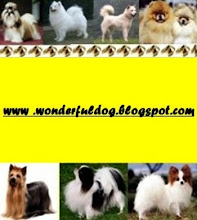

Pekingese Breed Standard
Toy Group
General Appearance
The Pekingese is a well-balanced, compact dog of Chinese origin with a heavy front and lighter hindquarters. Its temperament is one of directness, independence and individuality. Its image is lionlike, implying courage, dignity, boldness and self-esteem rather than daintiness or delicacy.
Size, Substance, Proportion
Size/Substance - The Pekingese, when lifted, is surprisingly heavy for its size. It has a stocky, muscular body. All weights are correct within the limit of 14 pounds. Disqualification: Weight over 14 pounds. Proportion - Overall balance is of utmost importance. The head is large in proportion to the body. The Pekingese is slightly longer than tall when measured from the forechest to the buttocks. The overall outline is an approximate ratio of 3 high to 5 long.
Head
Face - The topskull is massive, broad and flat and, when combined with the wide set eyes, cheekbones and broad lower jaw, forms the correctly shaped face. When viewed from the front, the skull is wider than deep, which contributes to the desired rectangular, envelope-shaped appearance of the head. In profile, the face is flat. When viewed from the side, the chin, nose leather and brow all lie in one plane, which slants very slightly backward from chin to forehead. Ears - They are heart-shaped, set on the front corners of the topskull, and lie flat against the head. The leather does not extend below the jaw. Correctly placed ears, with their heavy feathering and long fringing, frame the sides of the face and add to the appearance of a wide, rectangular head. Eyes - They are large, very dark, round, lustrous and set wide apart. The look is bold, not bulging. The eye rims are black and the white of the eye does not show when the dog is looking straight ahead. Nose - It is broad, short and black. Nostrils are wide and open rather than pinched. A line drawn horizontally over the top of the nose intersects slightly above the center of the eyes. Wrinkle - It effectively separates the upper and lower areas of the face. It is a hair-covered fold of skin extending from one cheek over the bridge of the nose in a wide inverted V to the other cheek. It is never so prominent or heavy as to crowd the facial features, obscure more than a small portion of the eyes, or fall forward over any portion of the nose leather. Stop - It is obscured from view by the over-nose wrinkle. Muzzle - It is very flat, broad, and well filled-in below the eyes. The skin is black on all colors. Whiskers add to the desired expression. Mouth - The lower jaw is undershot and broad. The black lips meet neatly and neither teeth nor tongue show when the mouth is closed.
Neck, Body, Tail
Neck - It is very short and thick. Body - It is pear-shaped, compact and low to the ground. It is heavy in front with well-sprung ribs slung between the forelegs. The forechest is broad and full without a protruding breastbone. The underline rises from the deep chest to the lighter loin, thus forming a narrow waist. The topline is straight and the loin is short. Tail - The high set tail is slightly arched and carried well over the back, free of kinks or curls. Long, profuse, straight fringing may fall to either side.
Forequarters
They are short, thick and heavy-boned. The bones of the forelegs are moderately bowed between the pastern and elbow. The broad chest, wide set forelegs and the closer rear legs all contribute to the correct rolling gait. The distance from the point of the shoulder to the tip of the withers is approximately equal to the distance from the point of the shoulder to the elbow. Shoulders are well laid back and fit smoothly onto the body. The elbows are always close to the body. Front feet are turned out slightly when standing or moving. The pasterns slope gently.
Hindquarters
They are lighter in bone than the forequarters. There is moderate angulation of stifle and hock. When viewed from behind, the rear legs are reasonably close and parallel, and the feet point straight ahead when standing or moving.
Coat & Presentation
Coat - It is a long, coarse-textured, straight, stand-off outer coat, with thick, soft undercoat. The coat forms a noticeable mane on the neck and shoulder area with the coat on the remainder of the body somewhat shorter in length. A long and profuse coat is desirable providing it does not obscure the shape of the body. Long feathering is found on toes, backs of the thighs and forelegs, with longer fringing on the ears and tail. Presentation - Presentation should accentuate the natural outline of the Pekingese. Any obvious trimming or sculpting of the coat, detracting from its natural appearance, should be severely penalized.
Color
All coat colors and markings are allowable and of equal merit. A black mask or a self-colored face is equally acceptable. Regardless of coat color the exposed skin of the muzzle, nose, lips and eye rims is black.
Gait
It is unhurried, dignified, free and strong, with a slight roll over the shoulders. This motion is smooth and effortless and is as free as possible from bouncing, prancing or jarring. The rolling gait results from a combination of the bowed forelegs, well laid back shoulders, full broad chest and narrow light rear, all of which produce adequate reach and moderate drive.
Temperament
A combination of regal dignity, intelligence and self-importance make for a good natured, opinionated and affectionate companion to those who have earned its respect.
Disqualification
Weight over 14 pounds.
The foregoing is a description of the ideal Pekingese. Any deviation should be penalized in direct proportion to the extent of that deviation.

No comments:
Post a Comment